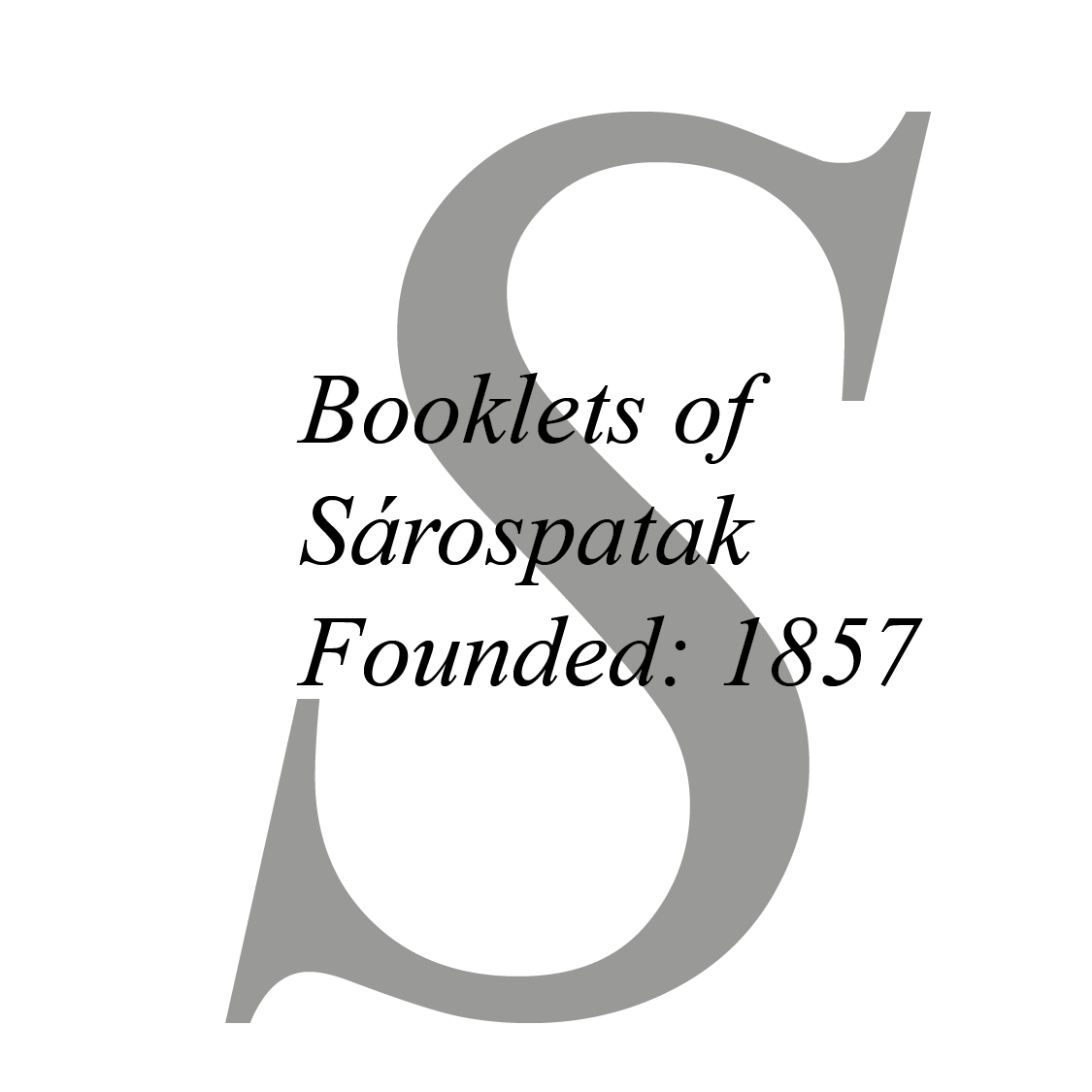Simon Fraser University has provided valuable services free of charge, which we publish on our own servers. For a small fee, we offer hosting on our servers to publishers who want to provide their readers with not only print but also electronic content. In return, we regularly update our services. The basic fee for the services is €240 per year, which covers the maintenance costs of the servers. This provides 10 GB of storage space per publisher, but if required, the storage space can be increased in proportion to the basic fee.
You can place your order on the Nanohost Hosting Provider website or by email at vargawebkiado@gmail.com.
Journals
-
Booklets of Sárospatak
Responsible publisher: Sándor Enghy, PhD - rector
ISSN (print) 1416-9878
ISSN (online) 3057-9198
ISSN-L 1416-9878
Website: www.sarospatakifuzetek.hu
E-mail: sarospatakifuzetek@gmail.com
OJS: https://acad.hu/ojs/index.php/sf
Proofreading
József Lapis, PhD, SRHE
Gyula Homoki SRHE
English proofreading
Pálma Füsti-Molnár
Gyula Homoki
Preparation of the printing house and cover design by
József Asztalos (until September 2025)
István Varga (from October 2025)
Produced by Kapitális Printing House Managing Director: József KapusiThe online presence, the CEEOL, the MTMT, the Real Repository upload and the website are maintained by:
István Varga https://vawe.hu +36304982081 -
Miskolci Keresztény Szemle (Archív)
ISSN: 2676-8127
Linking ISSN (ISSN-L): 2676-8127
A lap rovatai
- Évfordulók
- Ünnepek-alkalmak
- Egyházak, teológiák, hitvallások
- Egyházak és társadalom
- Egyházak és történelem
- Egyházak és kultúra
A lap főszerkesztői
- Gróf Lajos (2005–2009)
- Jeney Edit (2010–2016)
- Gróf Lajos (2016–2017)
- Zsugyel János (2017–2024)
Tipográfia és nyomdai munkák
- Tipográfia: Keglovics János
- Nyomda: Tipo-Top Nyomda, Miskolc
- Felelős vezető: Solymosi Róbert
-
JEL-KÉP Communication, public opinion, media

A 1980-2011 között nyomtatásban megjelent számok digitalizált változatai >>>
A http://www.c3.hu/~jelkep/ oldalon
elérhető számok:
1999/1, 1999/2, 1999/3, 1999/4
KOMMUNIKÁCIÓ, KÖZVÉLEMÉNY, MÉDIA
A Magyar Kommunikációtudományi Társaság folyóirata
2024/3 2024/2 2024/1 2023/1 2022/3 2022/2 2022/1
2021/4 2021/3 2021/2 2021/1 2020/4 2020/3 2020/2 2020/1
2019/3 2019/2 2019/1 2018/4 2018/3 2018/2 2018/1
2017/2KLSZ 2017/3 2017/2 2017/1KLSZ 2017/1 2016/4 2016/3 2016/2 2016/1
2015/4 2015/1KLSZ Kommunikáció képzés különszám 2015/3 2015/2 2015/1
2014/4 2014/3 2014/2 2014/1 2013/3-4 2013/1-2 2012/1-4


